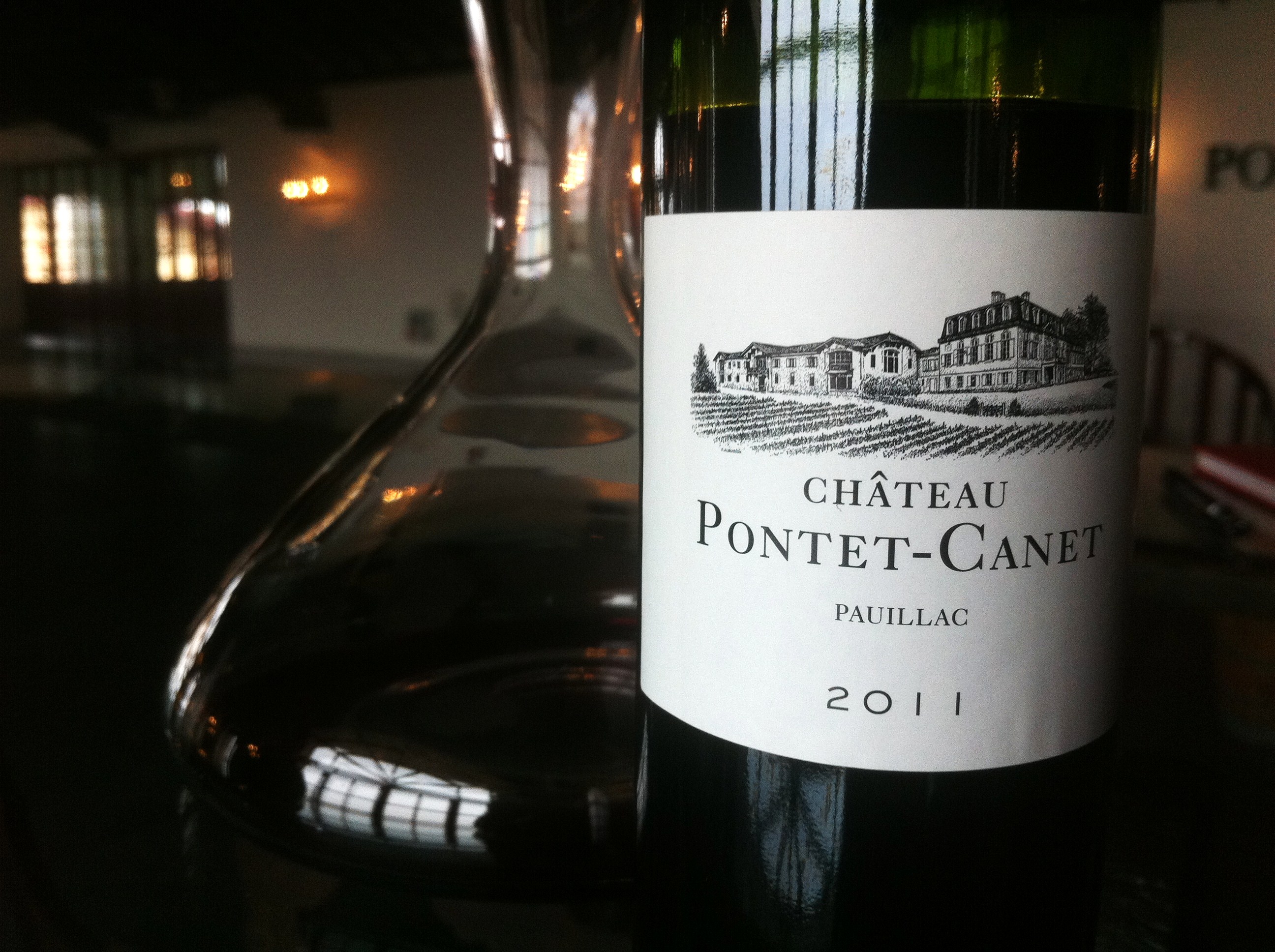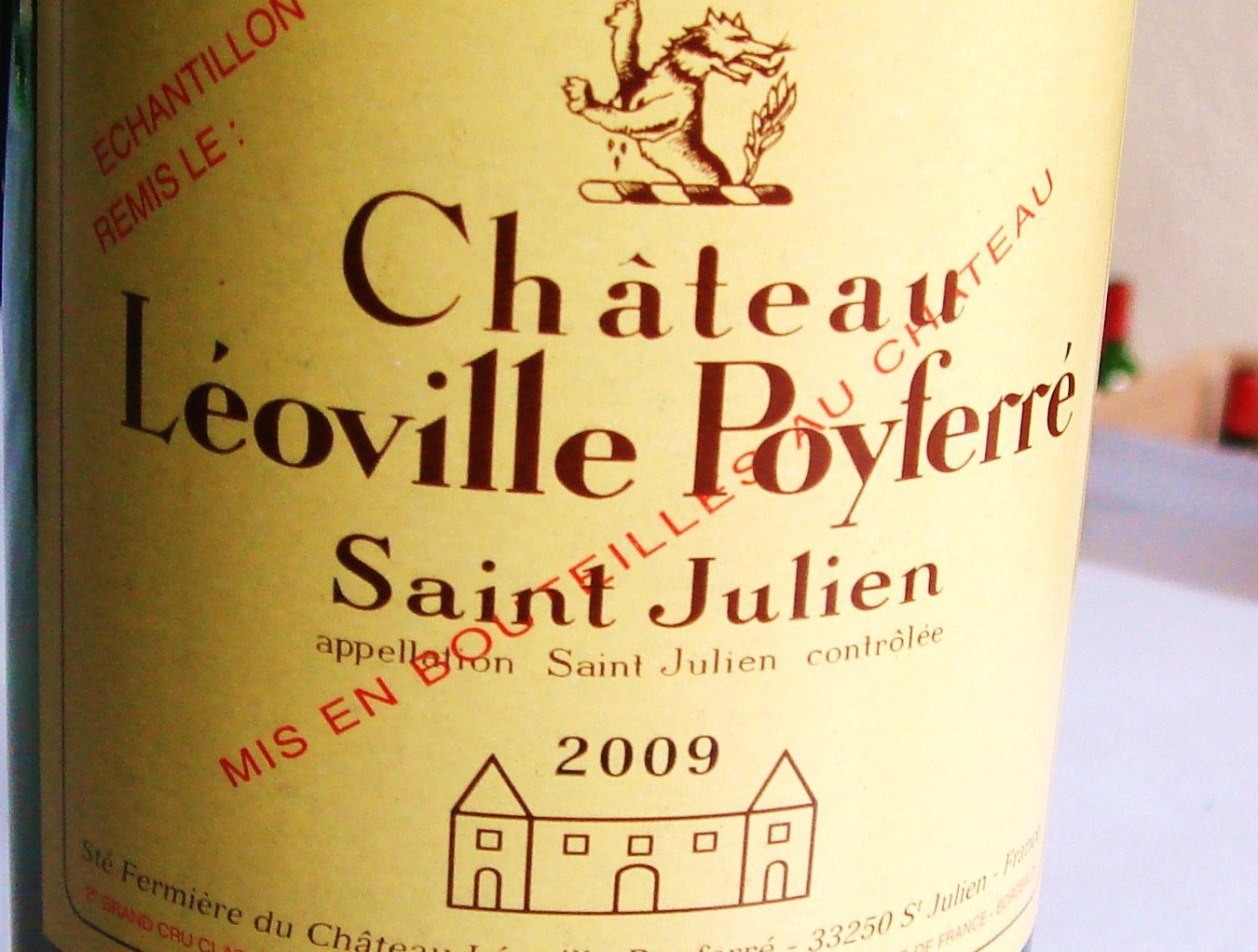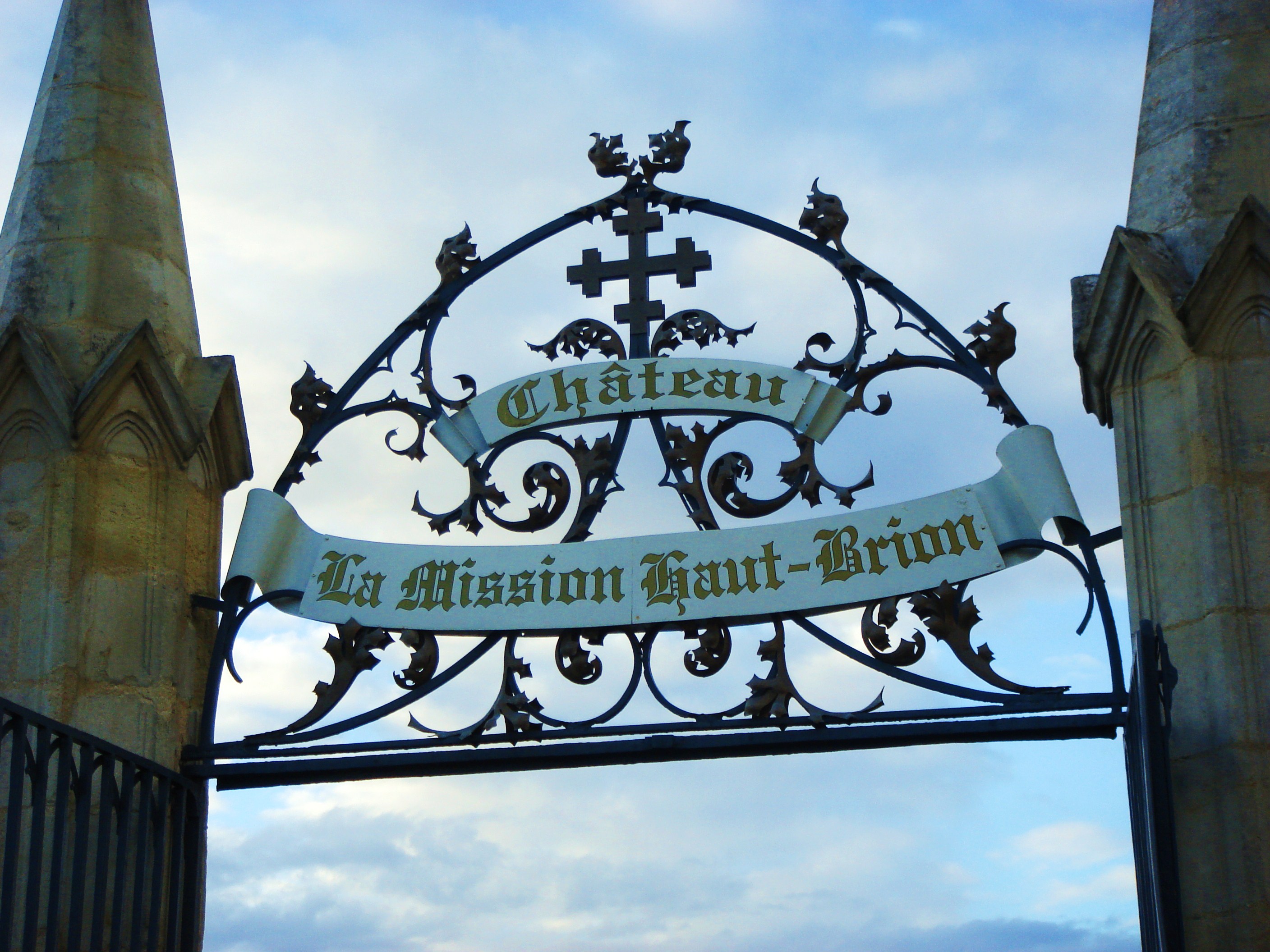Bordeaux 2016 Primeurs: Overview
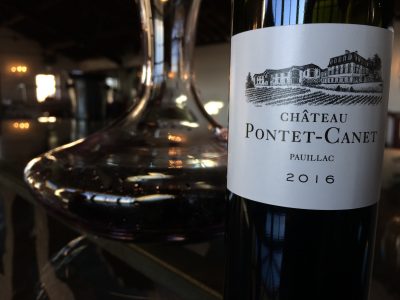 Last year 2015 was wildly heralded. The wines had beauty. The year produced wonderful wine on the right bank, but the picture was a little muddier on the left. Bordeaux 2016 brings greater homogeneity. Excellence is achieved at all levels and in all appellations for the reds. In the Médoc and the Haut-Médoc, the qualitative heights to which the wines soar are remarkable. In that sense it is undoubtedly a great Cabernet year. With the possible exception of 2014 in St Estèphe and 2015 in Margaux, 2016 should probably be seen as the best vintage on the left bank since 2010. But what is particularly exciting about 2016 is that in a great many cases it is a far easier vintage to understand than 2010 at this young stage. The alcohols are significantly lower and the tannins, which are up there with 2010 [and in a few cases even more considerable], seem much more succulent and textured. There is freshness too – and the aromatics are beautiful. The vintage also excels in St Emilion, Pomerol and in Pessac-Léognan. Cabernet Franc has done extremely well, but so too has Merlot. There are exceptions. Firstly the vines struggled with the drought on the lighter soils and in younger plots. Secondly, the hot and dry conditions were not always favourable to some of Bordeaux’s dry whites, the aromatic Sauvignon Blanc in particular. Yet for the reds I came away from many of the tastings during primeurs with the same excitement as I had back in 2009 and 2010. 2016 is potentially great and concludes a trilogy of fascinating vintages for the region.
Last year 2015 was wildly heralded. The wines had beauty. The year produced wonderful wine on the right bank, but the picture was a little muddier on the left. Bordeaux 2016 brings greater homogeneity. Excellence is achieved at all levels and in all appellations for the reds. In the Médoc and the Haut-Médoc, the qualitative heights to which the wines soar are remarkable. In that sense it is undoubtedly a great Cabernet year. With the possible exception of 2014 in St Estèphe and 2015 in Margaux, 2016 should probably be seen as the best vintage on the left bank since 2010. But what is particularly exciting about 2016 is that in a great many cases it is a far easier vintage to understand than 2010 at this young stage. The alcohols are significantly lower and the tannins, which are up there with 2010 [and in a few cases even more considerable], seem much more succulent and textured. There is freshness too – and the aromatics are beautiful. The vintage also excels in St Emilion, Pomerol and in Pessac-Léognan. Cabernet Franc has done extremely well, but so too has Merlot. There are exceptions. Firstly the vines struggled with the drought on the lighter soils and in younger plots. Secondly, the hot and dry conditions were not always favourable to some of Bordeaux’s dry whites, the aromatic Sauvignon Blanc in particular. Yet for the reds I came away from many of the tastings during primeurs with the same excitement as I had back in 2009 and 2010. 2016 is potentially great and concludes a trilogy of fascinating vintages for the region.
One thing is for sure. 2016 is a vintage that took many by surprise. It was a vintage of two halves. The start to the year was extremely wet, but quite mild. This rain turned out to be useful in replenishing the groundwater reserves which would be sorely needed later. There were nerve racking frosts at the end of April which did crop damage in a few places [especially in parts of Pessac-Léognan]. On the eve of flowering, conditions weren’t really up to much. Then, on cue with a sense of dramatic timing, a miraculous window of fine weather opened up. This allowed for good, even fruit set and later a harvest with good yields [the vintage is the largest since 2004].
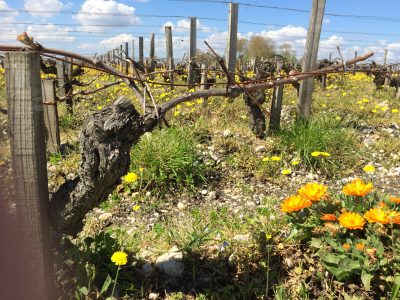 Vines at Château Latour
Vines at Château Latour
By mid June onwards the summer heated up and, in many places, it didn’t rain significantly – in some places it didn’t rain at all – until mid-September. Despite the sun and the heat, the daily range was good, with cooler than average nights [2016 was no 2003]. This preserved acidity in the grapes and their aromatic qualities [at least in the reds with their tougher skins]. There was also a significant build up of anthocyanins in the grapes. Véraison [the colour change in the grapes] was also quick and even. The main issue, with sunny and hot [sometimes very hot] days continuing into September, was the ripening of the tannins given the continued drought conditions. What was needed to complete the narrative [for a potentially excellent red wine harvest] was a bout of considerable rain in a short period. Ideally this would be followed by a return to sunny, dry conditions, but perhaps not too hot.
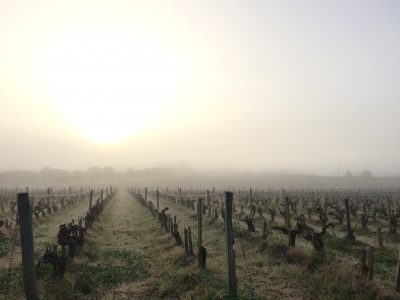 A foggy morning at Calon-Ségur
A foggy morning at Calon-Ségur
Remarkably this is exactly what happened. A storm brought rain in mid-September [13th]. Dry and largely sunny weather returned [with cool nights] and good conditions prevailed well into October. This enabled many growers to pick when they wished [a so called ‘deckchair’ vintage] and attain optimal ripeness, which was facilitated in part by the extra mid-September rain.
Overall, left bank and right, 2016 shares the bright and beautiful fruit tones of the 2015 vintage, but has greater concentration and density owing to the drought and warmer conditions. There’s really no such thing as an entirely perfect Bordeaux vintage. Even the bright shining stars of 2009 and 2010 brought their disappointments. Bordeaux is a big place. There’s variation. Heat, drought and late harvests don’t favour all grape varieties or places equally. Topography and soil type all play a huge part. Then there’s the human dimension. If I could find a weakness in 2016 it could be in a few of the reds in Pessac-Léognan and in the dry whites, but overall 2016 does appear a remarkably homogeneous and exciting year. I believe Sauternes and Barsac have had an excellent vintage but I didn’t get the chance to taste them this year.
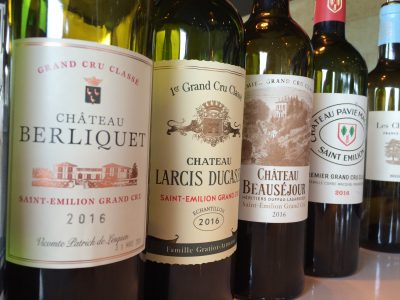
I did taste excellent wines in Lalande de Pomerol, Pomerol and St Emilion. Many St Emilion Grand Cru are lovely this year and the Grands Crus Classés seem pretty homogenous as a group. The Premier Grand Crus Classés such as Château Angélus, Château Beauséjour [héritiers Duffau-Lagarrosse], Château Canon-La-Gaffelière, Château Larcis Ducasse, Château Pavie Macquin, Château Valandraud and La Mondotte are exceptional. Very good wines have also been made in the Côtes de Bordeaux, notably Castillon.
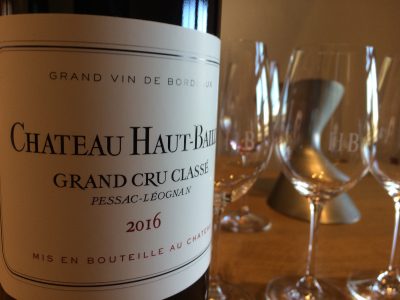
In Pessac-Léognan I was struck by the exceptional quality of the reds from Château Haut-Brion, Château La Mission Haut-Brion, Domaine de Chevalier, Château Haut-Bailly [wow] and Château Smith Haut-Lafitte. The whites were generally good, however many lacked the aromatic complexity of recent years.
Up in the Haut-Médoc remarkable things have been achieved by the Crus Classés, Crus Bourgeois and their ilk. If prices aren’t up much on 2015, these should prove really good buys. Château Beaumont, Château Belgrave, Château Cantemerle, Château de Camensac and Château La Lagune are all really impressive, but almost all the familiar names have turned in exciting wines this year. In Moulis and Listrac there are some wonderful wines too [Château Poujeaux springs to mind especially].
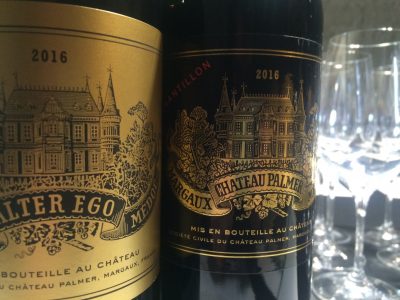
If Margaux played a blinder in 2015, many properties have turned in wonderful 2016s too. Château Palmer is one of the wines of the vintage, along with Château Margaux. There are stand-out efforts too from Château Brane-Cantenac, Château Durfort-Vivens and Château Rausan-Ségla, but many others impressed [Château Angludet, Château Monbrison, Château La Gurgue, Château Labégorce].
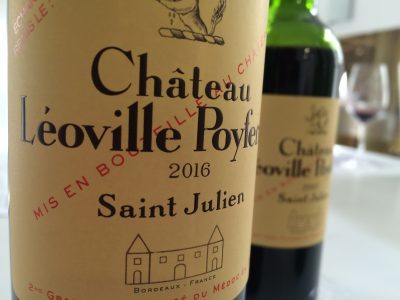
Further north and the excitement increases. St Juliens Château Ducru-Beaucaillou, Château Léoville Poyferré, and Château Léoville Las Cases have made riveting wines that show amazing depth and texture. In Pauillac, first growths Château Lafite-Rothschild, Château Latour and Château Mouton-Rothschild have made wines to rival the legendary 2009 and 2010 vintages. Château Pontet-Canet, Château Grand-Puy-Lacoste, Château Clerc Milon and Château Duhart Milon are exceptional, while Château d’Armailhac, Château Grand-Puy Ducasse and Château Haut-Bages Libéral have made some of their most impressive wine to date.
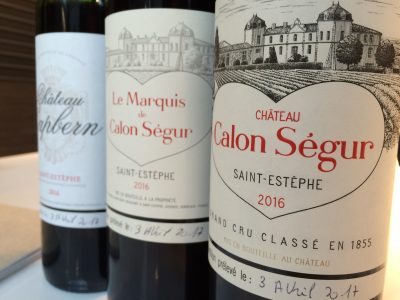
Save the absolute superlatives however for St Estèphe. There is an epic vintage in the making here in 2016 which rivals [eclipses?] 2014 here. The top trio of Château Calon Ségur, Château Cos d’Estournel and Château Montrose are extraordinary. They remind me of 2010 but without the drier tannin. Let’s hope prices don’t shift up dramatically. If they do then there’s a glut of fine St Estèphe from value properties such as Château Beau-Site, Château Le Boscq, Château Capbern, Château Le Crock, Château Haut-Marbuzet, Château Meyney and Château Tronquoy-Lalande.
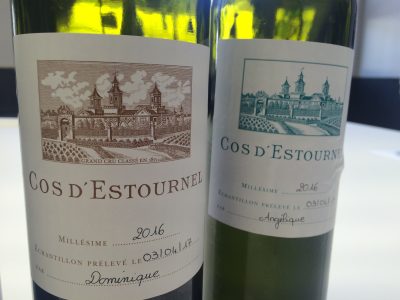
Right at the top of the left bank there is a lot of delicious Médoc too. Here there should be good value. Properties like Château Potensac, Château La Tour de By and Goulée look exceptionally good, but there are many others [like Château Blaignan, Château Loudenne, Château Patache d’Aux for example] that will give tremendous pleasure.
Next up my detailed tasting notes. I’ll start with the Côtes de Bordeaux appellations – an impressive bunch – and then look at St Emilion, Lalande de Pomerol and Pomerol.
Tags: Bdx16, Bordeaux, Chateau Angélus, Chateau Angludet, Château Beau-Site, Chateau Beaumont, Château Beauséjour [héritiers Duffau-Lagarrosse], Chateau Belgrave, Chateau Blaignan, Chateau Brane-Cantenac, Chateau Calon-Ségur, Chateau Canon La Gaffelière, Chateau Cantemerle, Chateau Clerc-Milon, Chateau Cos d’Estournel, Chateau d’Armailhac, Chateau de Camensac, Chateau Ducru-Beaucaillou, Chateau Durfort-Vivens, Chateau Grand-Puy Ducasse, Chateau Grand-Puy-Lacoste, Chateau Haut-Bages Liberal, Chateau Haut-Bailly, Chateau Haut-Brion, Chateau Haut-Marbuzet, Chateau La Boscq, Chateau La Gurgue, Chateau La Lagune, Chateau La Mission Haut-Brion, Chateau Labégorce, Chateau Lafite-Rothschild, Chateau Larcis Ducasse, Chateau Latour, Chateau Le Crock, Chateau Léoville Las Cases, Chateau Léoville Poyferré, Château Loudenne, Chateau Margaux, Chateau Meyney, Chateau Monbrison, Chateau Montrose, Chateau Mouton-Rothschild, Chateau Palmer, Chateau Patache d’Aux, Chateau Pavie Macquin, Chateau Pontet Canet, Chateau Potensac, Chateau Poujeaux, Chateau Rauzan-Ségla, Chateau Smith Haut Lafitte, Chateau Tronquoy-Lalande, Chateau Valandraud, Côtes de Bordeaux, Domaine de Chevalier, Goulée, Grand Cru Classé, Haut Médoc, La Mondotte, Lalande de Pomerol, Listrac, Margaux, Médoc, Moulis, Pauillac, Pessac-Léognan, Pomerol, Premier Grand Cru Classé, St Emilion, St Emilion Grand Cru, St Emilion Grand Cru Classé, St Emilion Premier Grand Cru Classé, St Estèphe, St Julien
